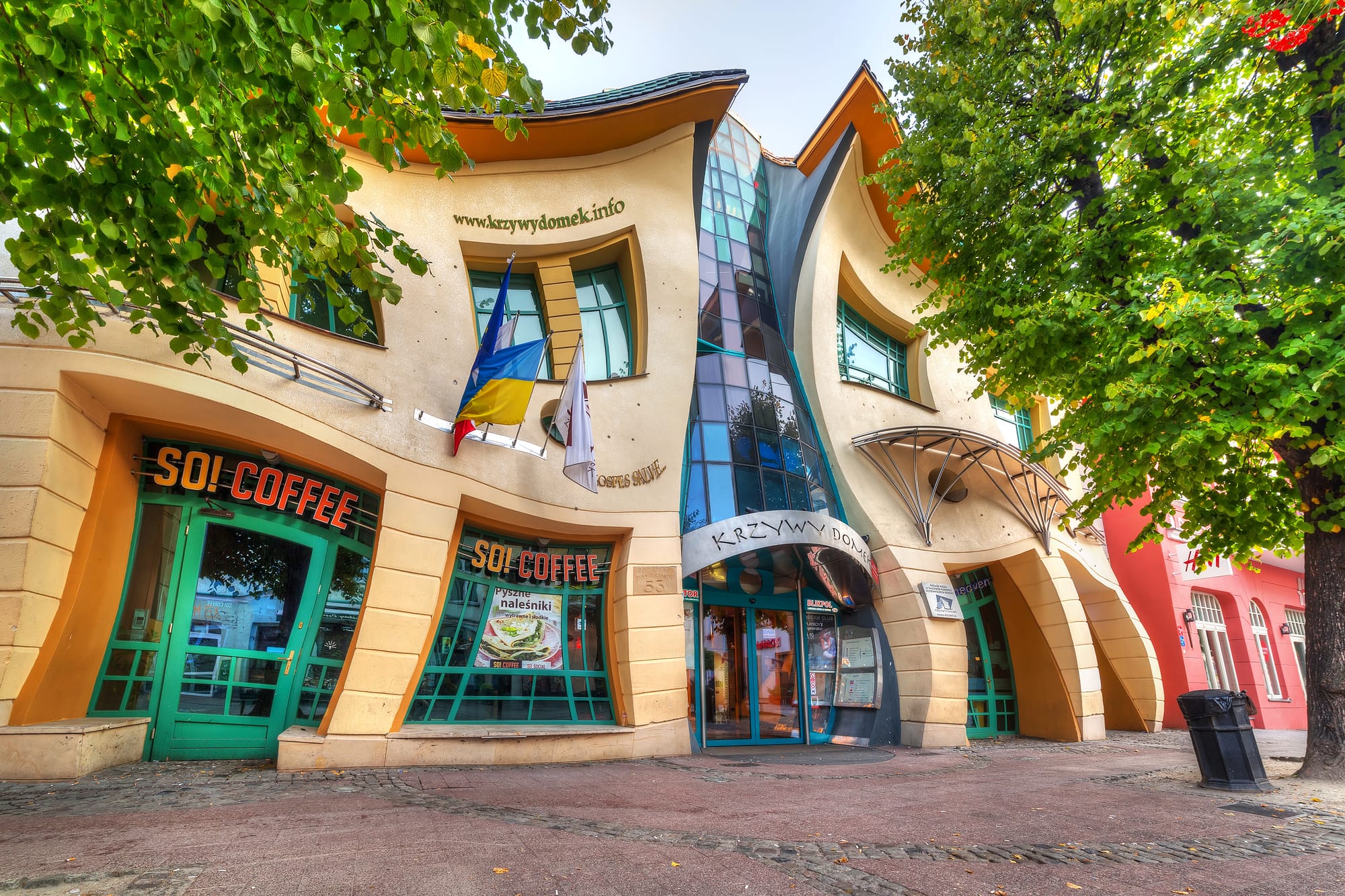The Polish architects Szotyńscy & Zaleski designed the Crooked House, a completion of theirs in 2004; it stands proudly as part of the Rezydent shopping center located at Sopot's heart, a famous seaside resort town. Jan Marcin Szancer's fairytale illustrations and Per Dahlberg's imaginative works inspire this building's design; they are its artistic muses.
►
The Polish architects Szotyńscy & Zaleski designed the Crooked House, a completion of theirs in 2004; it stands proudly as part of the Rezydent shopping center located at Sopot's heart, a famous seaside resort town. Jan Marcin Szancer's fairytale illustrations and Per Dahlberg's imaginative works inspire this building's design; they are its artistic muses.
The Crooked House, at first glance, seems to defy the conventional principles of architecture as if it's directly from a storybook. Its undulating lines and warped walls challenge the viewer's perception with an optical illusion that creates its surreal facade. Vibrant pastel-colored tiles adorn its exterior, resonating like something out of a dream to further enhance this fantastical appearance.
Seeking to recreate the whimsical, playful atmosphere of fairy tales and childhood fantasies, the architects achieved this through their creation: The Crooked House. The very structure appears, defiantly, to defy physics' laws, as though it emerged from a world where gravity and geometry function on an alternate plane. This departure from conventional architectural norms transforms into a symbol of artistic expression and makes Sopot's landmark the Crooked House.
Visitors to the Crooked House experience a unique retail environment. Various shops, restaurants, and cafes inhabit the building's irregular spaces; they cleverly use its quirks to create an unconventional yet enchanting setting. As patrons navigate through crooked hallways and sloping floors, amusement becomes an intrinsic part of their shopping or dining experiences, thus making each visit truly memorable.
The Crooked House, despite its facade of precarity, stands as a structurally sound building. Advanced construction techniques incorporating a steel framework within the structure bolster its stability; this innovative approach encourages architects to achieve desired aesthetics while remaining steadfastly committed to necessary safety standards.
The Crooked House's history intertwines with Sopot's transformation, evolving from a diminutive seaside town to an exhilarating tourism hub. They opted to incorporate this unique structure into their urban landscape, reflecting a departure from convention and an embrace of creativity. The Crooked House encapsulates imagination's celebration and serves as a potent reminder: architecture can transcend its helpful purpose and become incarnated artistic expression; it is a departure from mundanity.
Over the years, the Crooked House, an iconic landmark and symbol of Sopot's distinct charm, has garnered attention in numerous travel guides; art publications have also noted its unique architecture, inspiring myriad artistic projects. Beyond merely serving its functional purpose, this building significantly impacts viewers: it acts as a wellspring for those who revel in the amalgamation between artistry and architectural design.
The Crooked House in Sopot, Poland, is a remarkable architectural marvel that surpasses traditional boundaries. Its design draws inspiration from fairy tales and fantasy, transforming a shopping center into a whimsical work of art; this playful approach not only enhances its aesthetic appeal but also demonstrates how creativity can shape our built environment, enriching life with unforeseen beauty is an exquisite result thereof.
◄
